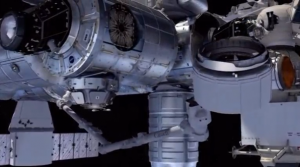
Reuters – SpaceX’s Dragon spacecraft is scheduled to launch on Friday (April 08), carrying a cargo ship that will take an experimental inflatable habitat to the International Space Station (ISS).
The privately owned SpaceX, which is owned by Tesla entrepreneur Elon Musk, has partnered with NASA to launch resupply missions to the ISS.
The Dragon spacecraft is scheduled to launch off of the company’s Falcon 9 rocket, carrying with it the Bigelow Expandable Activity Module (BEAM), as well as other scientific research materials and supplies for the crew.
BEAM, made by Bigelow Aerospace, will function as an expandable habitat for the crew and will be attached to space station.
At a news conference in Cape Canaveral Thursday (April 7), ISS program manager Kirk Shireman said the Dragon’s mission was extremely important.
“This vehicle, the Dragon vehicle, is really important for the International Space Station, it brings some very unique capabilities to ISS that are important. One is it has an external cargo capability, which is important, as you know we’ll be launching the Bigelow Expandable Activity Module on this flight. So we’re really looking forward to having that up on ISS,” said Shireman,” he said.
“This will be the first one where we actually have humans interacting with that module,” he added.
One of the main objectives in launching the expandable habitat is to allow for astronauts to function for long periods of time in low orbit, NASA said.
A key obstacle to overcome, said Shireman, is getting a large capsule into orbit, a challenge expandable material helps to overcome.
“The two big issues with launching to low earth orbit are mass, but probably even more so than mass is volume. So how can you package something in a small volume to fit inside a faring on a rocket, get it through the atmosphere and then have it expand to be a larger volume to live and work in. And so expandables is the answer to that question,” said Shireman.
NASA and its partners have ambitious plans to use expandable habitats to make it easier and more affordable to keep astronauts in space and possibly on other planets for long periods of time.
“It is the future. We’ll be using these, humans will be using these kinds of modules as we move further and further off the planet and actually as we inhabit low earth orbit. So I think it really is the next logical step in humans getting off the planet,” said Shireman.
The craft will partially return to earth after its launch, said SpaceX’s Vice President of Flight Reliability, Hans Koenigsmann.
“The first stage, landing, is going to be on a drone ship, it’s going to come back partially. In other words the drone ship is kind of like halfway where the splash point would be. And I certainly hope we’re going to nail the landing this time,” he said.
The Dragon spacecraft is scheduled to return to earth on May 11th.







